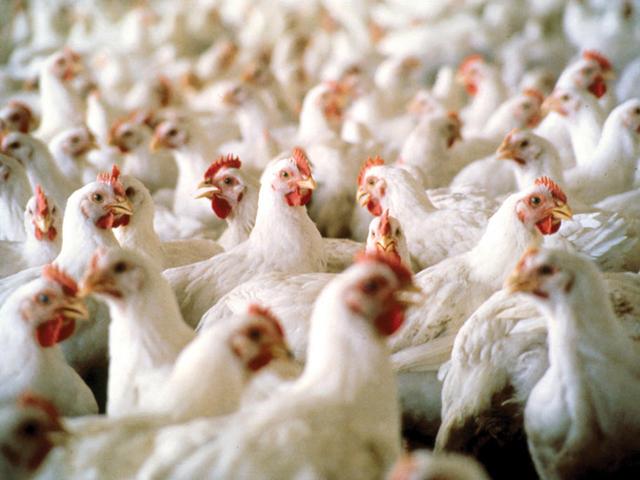HPAI Found in More States
Avian Influenza Cases Now Top 14.5 Million Birds; Outbreak Third Worst in US History as HPAI Continues to Spread
OMAHA (DTN) -- Highly pathogenic avian influenza is sweeping through major commercial operations as the number of states and infected flocks continues to grow. USDA is now depopulating more than 14.5 million birds, making this year's outbreak the third largest in U.S. history.
So far in March alone, USDA has reported highly pathogenic avian influenza (HPAI) infections involving nearly 13 million birds in 16 states, with the largest single infected flock involving an egg-laying operation in Buena Vista, Iowa, that included 5.3 million chickens.
Minnesota over the weekend announced a commercial turkey operation involving 289,000 birds was infected with the H5N1 strain. Infection in another commercial turkey flock in Minnesota involving 24,000 birds was confirmed as well. Jennie-O Turkey Store issued a statement Saturday that one of the Minnesota farms impacted was part of its supply chain.
Since early February, USDA has confirmed domesticated cases with commercial and backyard flocks in Connecticut, Delaware, Illinois, Indiana, Iowa, Kansas, Kentucky, Maine, Maryland, Michigan, Minnesota, Missouri, Nebraska, New Hampshire, New York, South Dakota and Wisconsin.
When cases are found in domestic flocks, USDA and state officials quarantine the premises and birds on the property are depopulated to prevent the spread of the disease. Other flocks within a 10-kilometer (6.21 miles) radius also are quarantined. USDA is authorized to provide indemnity payments to producers and the destroyed flocks do not enter the food system. Depopulated birds are typically composted on site if possible.
Along with the 5.3 million egg-laying operation in Iowa, a Wisconsin egg-laying farm was infected involving nearly 2.76 million chickens in mid-March. A Delaware broiler operation in February involved 1.1 million chickens. Iowa, Nebraska and Maryland also have reported other infected farms involving at least 500,000 birds each.
P[L1] D[0x0] M[300x250] OOP[F] ADUNIT[] T[]
The number of birds involved so far puts this year's HPAI outbreak as the third largest in history, according to USDA. The 2014-15 outbreak involved 43 million chickens and another 7.4 million turkeys, mainly affecting egg-laying operations in Iowa and turkey operations in Minnesota. In 1983-84, HPAI infected more than 17 million domestic birds, mainly in northeastern states.
The 2014-15 outbreak, considered the largest animal-disease outbreak in U.S. history, caused $1.6 billion in direct losses by producers and an overall impact to the U.S. economy of about $3.3 billion, according to USDA. The outbreak also drove up the prices for both eggs and turkeys for consumers.
States also are responding to HPAI by cancelling poultry events. Iowa, North Dakota and Nebraska are among the states that have announced at least temporarily halting all poultry events, including live bird auctions and exotic sales. Nebraska and North Dakota both announced the cancelations late last week.
"The decision to cancel poultry events was not taken lightly but is a necessary step to assure we are doing everything possible to protect our poultry producers, both small and large," said Steve Wellman, Nebraska's director of agriculture. "Poultry producers should continue to take biosecurity measures on their farms to help prevent the spread of the disease into their flock."
North Dakota officials made the decision to cancel bird shows and other events even though the state has not yet reported confirmed cases within the state.
HPAI is an airborne respiratory virus that spreads easily among chickens and turkeys through nasal and eye secretions, as well as manure. Avian influenzas are classified as either low or high pathogenic based on the ability of a particular strain to produce the disease in domestic poultry. The virus can be spread in various ways from flock to flock, including by wild birds, through contact with infected poultry, by equipment, and on the clothing and shoes of caretakers.
The signs for HPAI in flocks include a sudden increase in bird deaths without any clinical signs, a lack of energy or appetite, declines in egg production, or misshaped eggs that may have thin skin. Birds may show swelling in their heads, eyelids, wattles and hocks, or purple discoloration of wattles, combs or legs. Other signs may be gasping for air or coughing and sneezing.
APHIS officials have said a major red flag showing a sign of illness would be a decline in water consumption by a flock. Sometimes a decline in water consumption is among the first indications a flock was affected.
According to the U.S. Centers for Disease Control and Prevention, the recent HPAI detections in birds do not present an immediate public health concern. No human cases of these avian influenza viruses have been detected in the United States. It remains safe to eat poultry products. As a reminder, the proper handling and cooking of poultry and eggs to an internal temperature of 165 F kills bacteria and viruses.
Anyone involved with poultry production from the small backyard to the large commercial producer should review their biosecurity activities to assure the health of their birds. APHIS has materials about biosecurity, including videos, checklists, and a toolkit available at https://www.aphis.usda.gov/…
USDA will report positive test results to the World Organization for Animal Health (known by the French acronym OIE) as well as international trading partners. USDA also continues to communicate with trading partners to encourage adherence to OIE standards and minimize trade impacts.
APHIS will continue to announce the first case of HPAI in commercial and backyard flocks detected in a state but will not announce subsequent detections in the state. All cases in commercial and backyard flocks will be listed on the APHIS website at https://www.aphis.usda.gov/…
Chris Clayton can be reached at Chris.Clayton@dtn.com
Follow him on Twitter @ChrisClaytonDTN
(c) Copyright 2022 DTN, LLC. All rights reserved.




